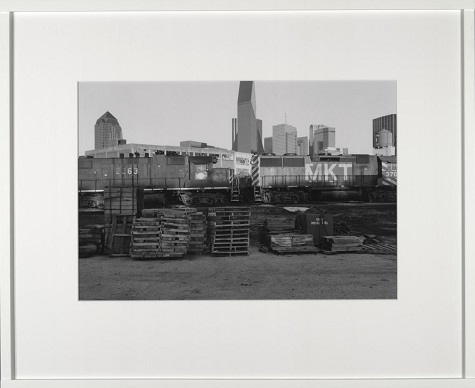One hour into David Byrne’s 1986 movie True Stories, John Goodman’s character, Louis Fyne, parks his car in front of the eccentric house of a voodoo practitioner. A sign reading “Invisible Hospital of Saint John the Baptist” is barely visible in the nighttime. That sign was hiding another sign that read “The Texas Kid.” The actual owner of the house with a fantastically decorated yard was Willard “The Texas Kid” Watson.
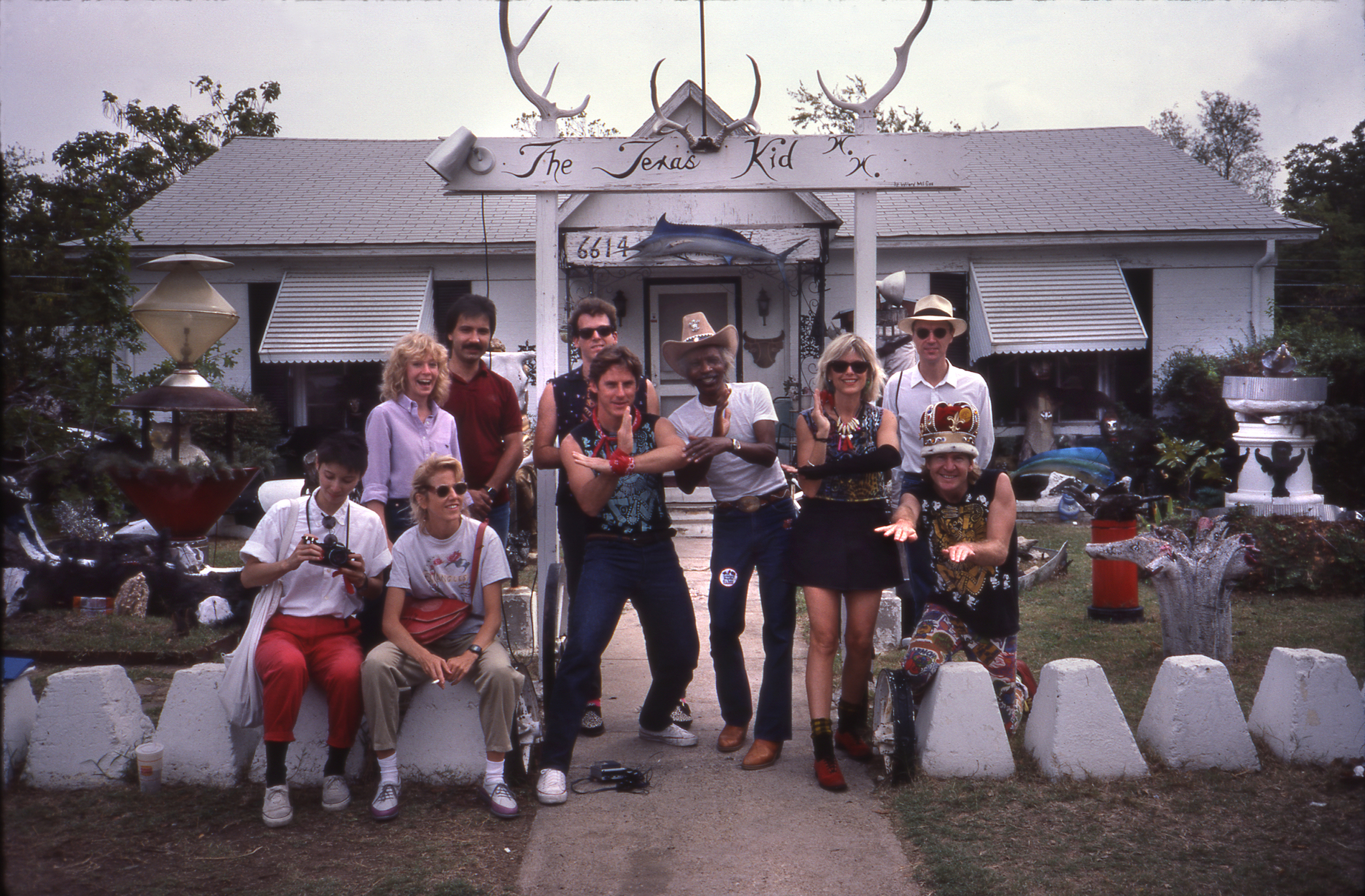
Willard Watson, a.k.a. The Texas Kid, was a folk artist born in Caddo Parish, Louisiana, and raised in Dallas, Texas. He was a local celebrity, recognized for his customized cars, flashy outfits that he sewed himself, and the sculpture garden outside his home near Love Field Airport. Fourteen of his drawings are in the DMA’s collection. The first drawings were acquired just three months after the movie was filmed.
As Watson recalled in his autobiography, “That year, 1985, David Byrne, who had a famous band called Talking Heads, came by the house and asked if he could film part of his movie TRUE STORIES at my house.”
Christina Patoski, a journalist and photographer from Fort Worth, served as a special consultant for the movie. David Byrne called her in 1984, after a mutual friend recommended Patoski to be a point of contact in Texas, and said he was working on a film. In the summer of 1984, Byrne, Patoski, and some friends drove around for three days scouting locations in Dallas and surrounding counties that Byrne imagined as settings for the fictional town of Virgil, Texas. Patoski took photographs during the initial trip and throughout the filming of the movie.
Patoski suggested that Byrne come back in the fall during the State Fair. He returned in October and brought Jonathan Demme, the director of Stop Making Sense. At that time, Patoski was directing a music video for Joe “King” Carrasco staged in the The Kid’s yard. They visited her there and met Watson and saw his incredible yard and home. Byrne decided to use it as a location in True Stories. Demme purchased some of Watson’s drawings and later cast him in his feature film Something Wild.
Byrne and crew came back in August of 1985 and started filming in early September. Patoski says it was an intense six-week shoot. Watson recalled:
“Elnora and I said yes, but we had to give up the use of our home for almost two weeks. They would work all day and often until two or three in the morning. The crew was all over the place. . . . At night, the cast and crew liked to party at nightclubs, particularly Shannon’s club, Tango. . . . I even went to their wrap party at Sons of Herman[n Hall.]”

While Watson himself doesn’t appear in the movie, his wife, Elnora, and one of their grandsons had roles as the wife and son of the shaman, played by Pops Staples. Patoski says they built the “voodoo room” for the movie, but the rest of the house, filled inside and out with Watson’s art, hardly had to be changed.
While True Stories was filming, a solo exhibition of Watson’s art was on view at the Bath House Cultural Center at White Rock Lake. It was there that a curator from the DMA saw his Life Cycle drawings, and after showing them to the director of the DMA plans were made to acquire them. “I was really really proud for my work to be acquired by the Dallas Museum of Art,” wrote Watson.
Click images to expand.

© Christina Patoski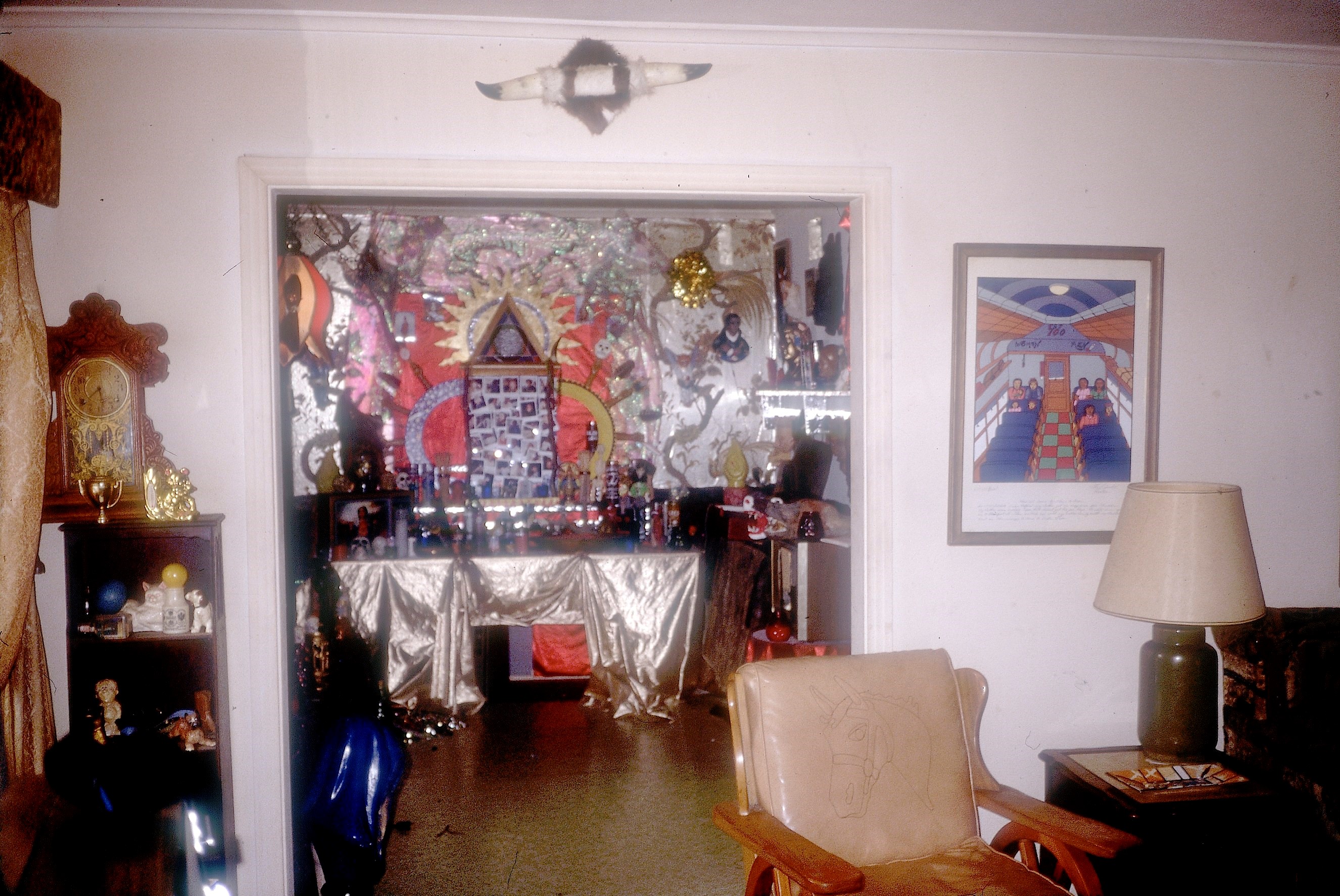
© Andy Reisberg
© Christina Patoski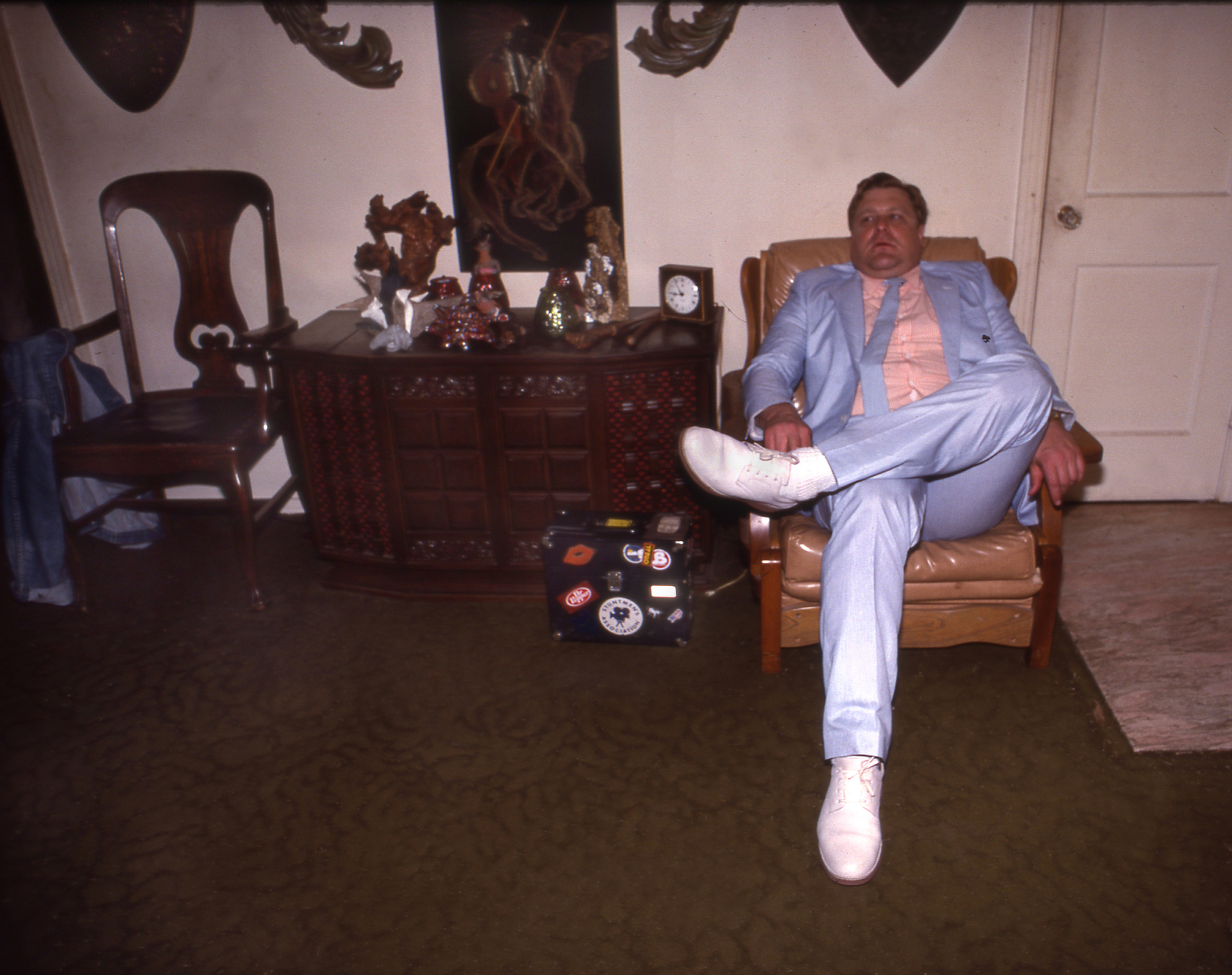
© Christina Patoski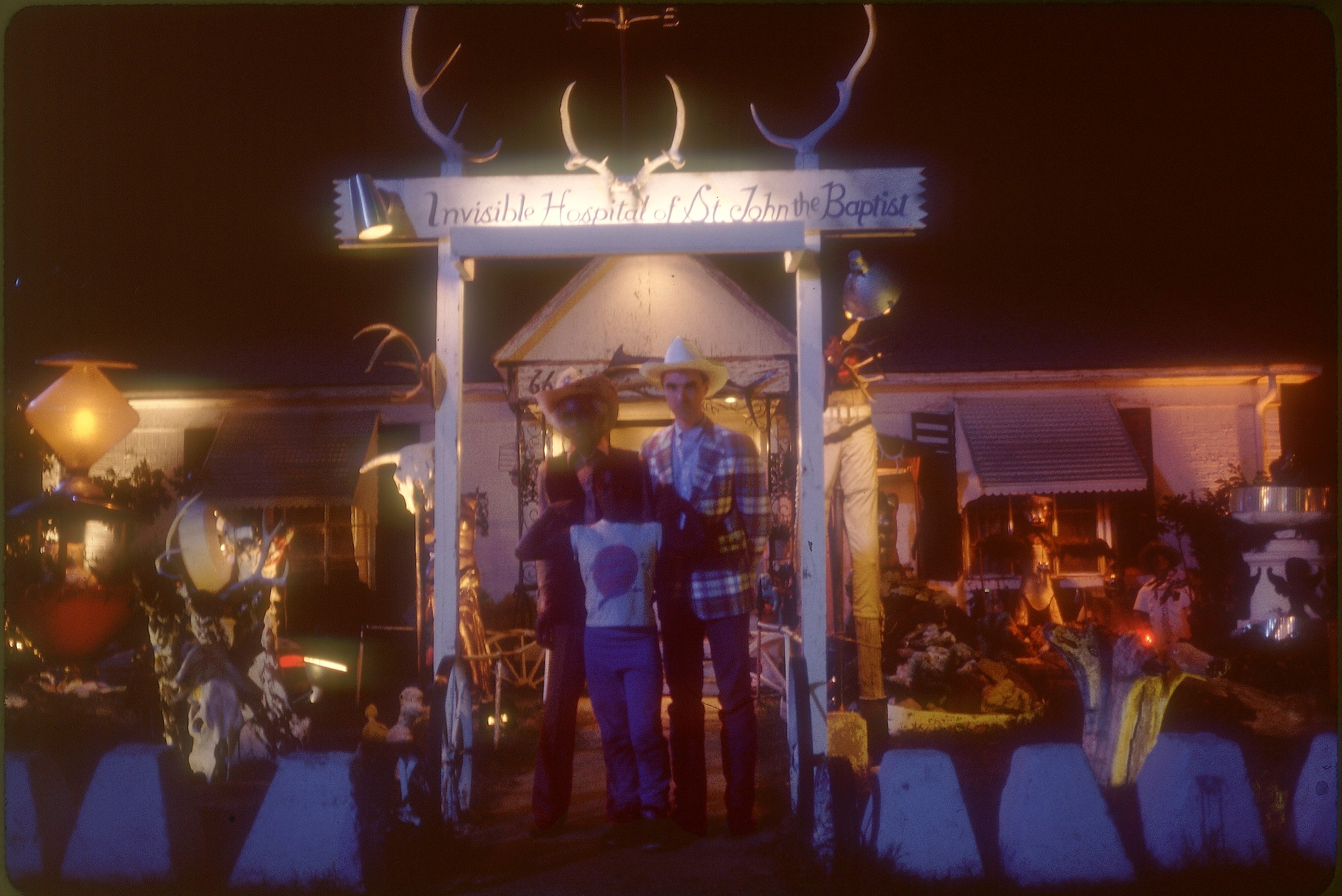
© Andy Reisberg
Lillian Michel is the Marketing and Communications Coordinator at the DMA.
